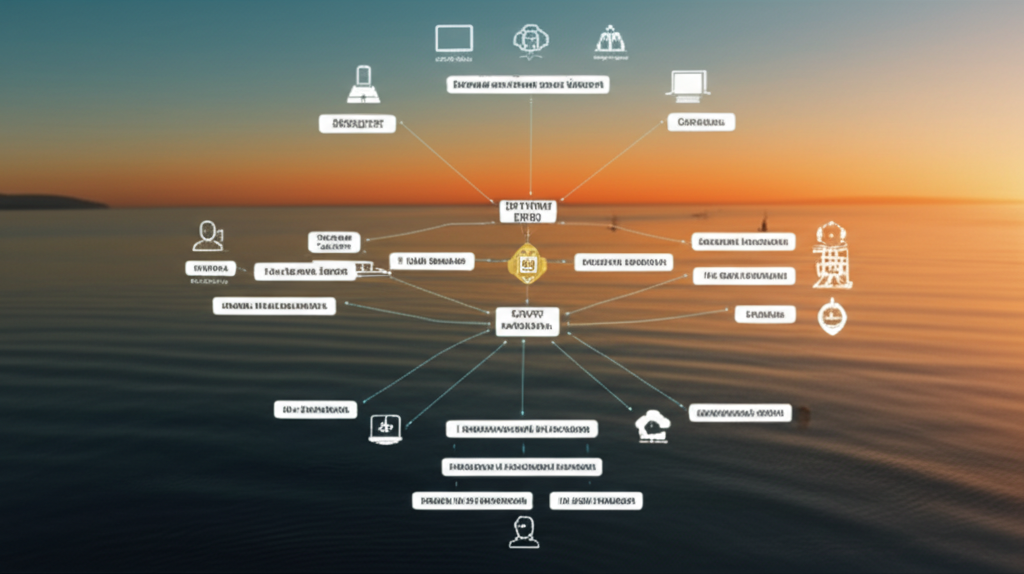
Zero Trust Architecture: A Complete Implementation Guide for 2025
Learn how to implement Zero Trust security architecture in your organization with practical steps, best practices, and real-world examples from enterprise deployments.
Het Mehta
Founder & Security Architect, 100xSecurity
Zero Trust Architecture: A Complete Implementation Guide for 2025
The traditional security model of "trust but verify" is no longer sufficient in today's threat landscape. Zero Trust Architecture (ZTA) represents a fundamental shift in how we approach cybersecurity, operating on the principle of "never trust, always verify."
What is Zero Trust Architecture?
Zero Trust is a security framework that requires all users, whether inside or outside the organization's network, to be authenticated, authorized, and continuously validated for security configuration and posture before being granted or keeping access to applications and data.
Core Principles of Zero Trust
1. **Verify explicitly** - Always authenticate and authorize based on all available data points
2. **Use least privilege access** - Limit user access with Just-In-Time and Just-Enough-Access (JIT/JEA)
3. **Assume breach** - Minimize blast radius and segment access
Implementation Strategy
Phase 1: Assessment and Planning
Before implementing Zero Trust, you need to understand your current security posture:
# Example: Network discovery using nmap
nmap -sn 192.168.1.0/24
nmap -sS -O 192.168.1.1-254
Key Assessment Areas:
- Current network architecture
- Data classification and location
- User access patterns
- Application dependencies
- Existing security controls
Phase 2: Identity and Access Management
Identity becomes the new perimeter in Zero Trust. Implement strong identity verification:
# Example: Multi-factor authentication implementation
import pyotp
import qrcode
def generate_mfa_secret(user_email):
secret = pyotp.random_base32()
totp_uri = pyotp.totp.TOTP(secret).provisioning_uri(
name=user_email,
issuer_name="100xSecurity"
)
# Generate QR code for easy setup
qr = qrcode.QRCode(version=1, box_size=10, border=5)
qr.add_data(totp_uri)
qr.make(fit=True)
return secret, qr
Phase 3: Network Segmentation
Implement micro-segmentation to limit lateral movement:
- **Software-Defined Perimeters (SDP)**
- **Network Access Control (NAC)**
- **Virtual LANs (VLANs) and subnets**
Phase 4: Device Security
Ensure all devices meet security standards before network access:
# Example: Device compliance policy
device_policy:
minimum_os_version: "10.0"
encryption_required: true
antivirus_enabled: true
patch_level: "current"
jailbreak_detection: true
Best Practices for Zero Trust Implementation
1. Start Small and Scale Gradually
Begin with a pilot group or specific application before rolling out organization-wide.
2. Continuous Monitoring
Implement comprehensive logging and monitoring:
{
"event_type": "access_request",
"user_id": "user123",
"resource": "sensitive_database",
"timestamp": "2025-01-15T10:30:00Z",
"risk_score": 75,
"decision": "allow_with_mfa"
}
3. User Experience Considerations
Balance security with usability to ensure user adoption and productivity.
Common Implementation Challenges
1. **Legacy System Integration** - Older systems may not support modern authentication
2. **User Resistance** - Additional security steps can impact workflow
3. **Complexity Management** - Zero Trust introduces new complexity layers
4. **Cost Considerations** - Initial implementation requires significant investment
Measuring Success
Track these key metrics to evaluate your Zero Trust implementation:
- **Mean Time to Detection (MTTD)**
- **Mean Time to Response (MTTR)**
- **Number of security incidents**
- **User productivity metrics**
- **Compliance audit results**
Conclusion
Zero Trust Architecture is not a destination but a journey. It requires ongoing commitment, continuous improvement, and adaptation to evolving threats. Start with a clear strategy, implement gradually, and always prioritize user experience alongside security.
The investment in Zero Trust pays dividends in reduced breach risk, improved compliance posture, and enhanced security visibility across your organization.